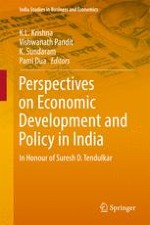
2017 | OriginalPaper | Chapter
1. Planning, Poverty and Political Economy of Reforms: A Tribute to Suresh D. Tendulkar
Author : T. N. Srinivasan
Published in: Perspectives on Economic Development and Policy in India
Publisher: Springer Singapore
Activate our intelligent search to find suitable subject content or patents.
Select sections of text to find matching patents with Artificial Intelligence. powered by
Select sections of text to find additional relevant content using AI-assisted search. powered by